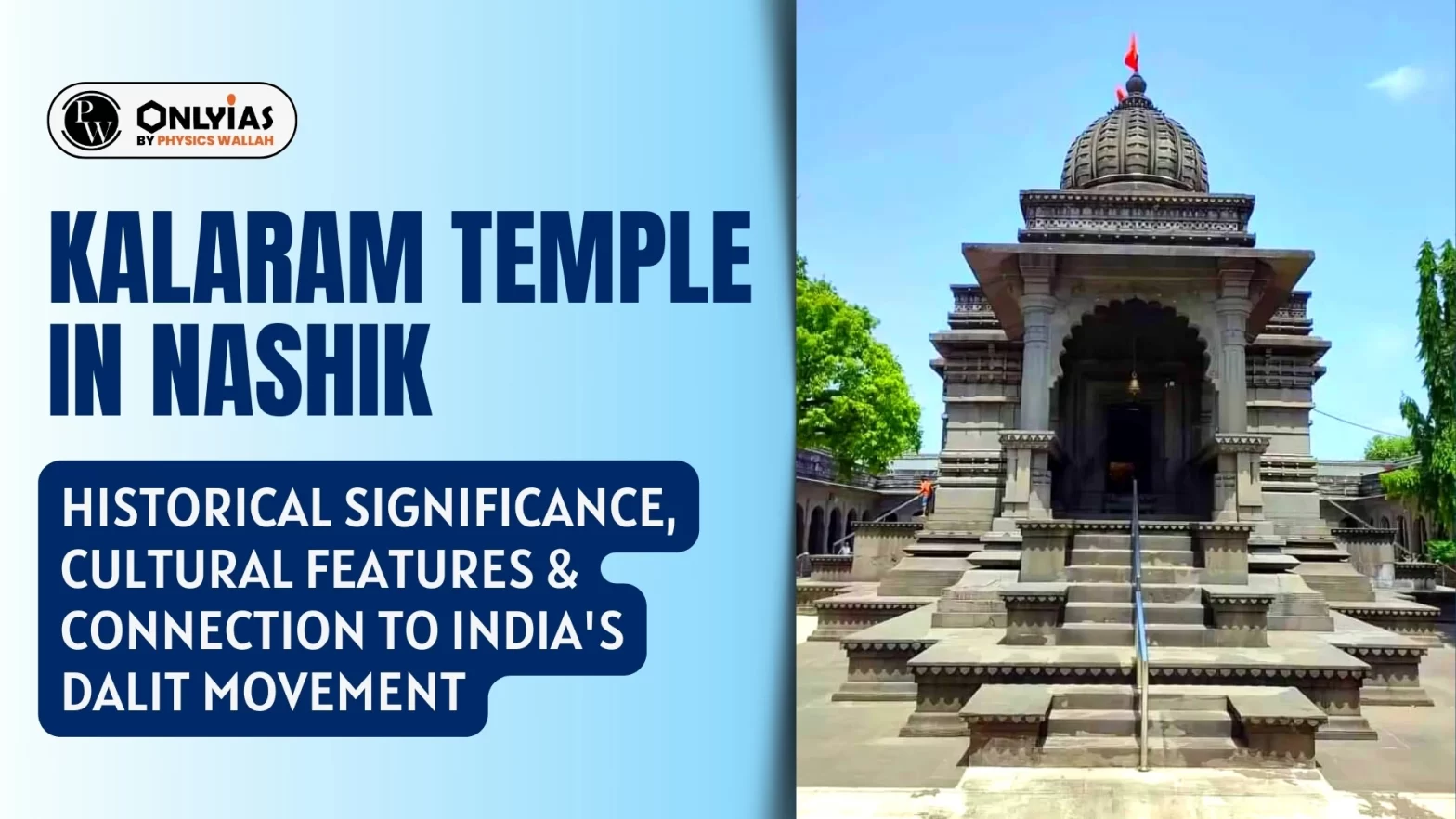Context: This editorial is based on the news “The story of Nashik’s Kalaram temple, visited by Modi — and by Ambedkar many decades ago” which was published in Indian Express. Recently, the Prime Minister visited the Kalaram Temple of Nashik, Maharshtra.
- Shiv Sena Chief also announced that on the day of the consecration ceremony of the Ram temple in Ayodhya, he would spend his day at the Kalaram temple.
Relevancy for Prelims: About Kalaram Temple, Distinctive Features, Dalit Movement, Ramayana Link,Sardar Rangarao Odheka, Panchavati’s Five Banyan Trees.
Relevance for Mains: Social Justice and Temple Entry Movements, Religious Pluralism and Constitutional Values, Role of Religious Institutions in Social Change, Intersection of Religion and Politics & Environmental Conservation. |
Kalaram Temple: A Glimpse into History and Spiritual Symbolism
- Black-Colored Idols: The Kalaram temple derives its name from a black statue of the Lord — Kala Ram translates literally to “Black Ram”. The sanctum sanctorum has statues of Ram, Sita, and Lakshman, and a black idol of Hanuman at the main entrance.
- Built by: The Temple was built in 1792 by Sardar Rangarao Odheka.
- Location: It is situated on the banks of Godavari in the Panchavati area of the city.
- Features: Exploring the Significance of Kalaram Temple’s Architectural Elements
- The main temple has 14 steps, representing the 14 years of Ram’s exile.
- The 84 pillars in the temples represent the cycle of 84 lakh species that one has to complete to be born as a human.
- A very old tree, with an impression of Lord Dattatreya’s footprints on the stone beneath it.
Enroll now for UPSC Online Course
Historical Significance: Kalaram Temple’s Role in the Dalit Movement and its Ramayana Connection
- India’s Dalit Movement Connection: The Kalaram temple is a site of a landmark agitation led by Babasaheb Ambedkar demanding temple entry rights for Dalits more than 90 years ago.
- As per an account of the Satyagraha for Temple Entry in Dhananjay Keer’s book, Dr Ambedkar: Life and Mission:
- Dr BR Ambedkar and social activist Pandurang Sadashiv Sane, led a satyagraha at the Kalaram temple on March 3, 1930, demanding entry for Dalits into the sacred space.
- This movement aimed to challenge the oppressive caste norms prevalent during the time.
- During the satyagraha, Ambedkar and his 15,000 Dalit followers peacefully picketed the temple.
- The Ramayana Link: The Region of Panchavati is where Shri Ram, along with Sita and Lakshman, spent the first few years of their 14-year exile, and the abduction of Mata Sita by demon King Ravana set off the Ramayana war.
- Panchavati: The name Panchavati comes from the existence of five banyan trees in the area. According to the epic, Lord Ram, Sita, and Lakshman set up a hut here as the presence of five banyan trees made this region auspicious.
![]() 13 Jan 2024
13 Jan 2024

